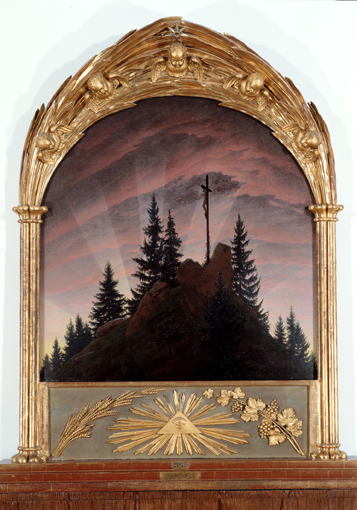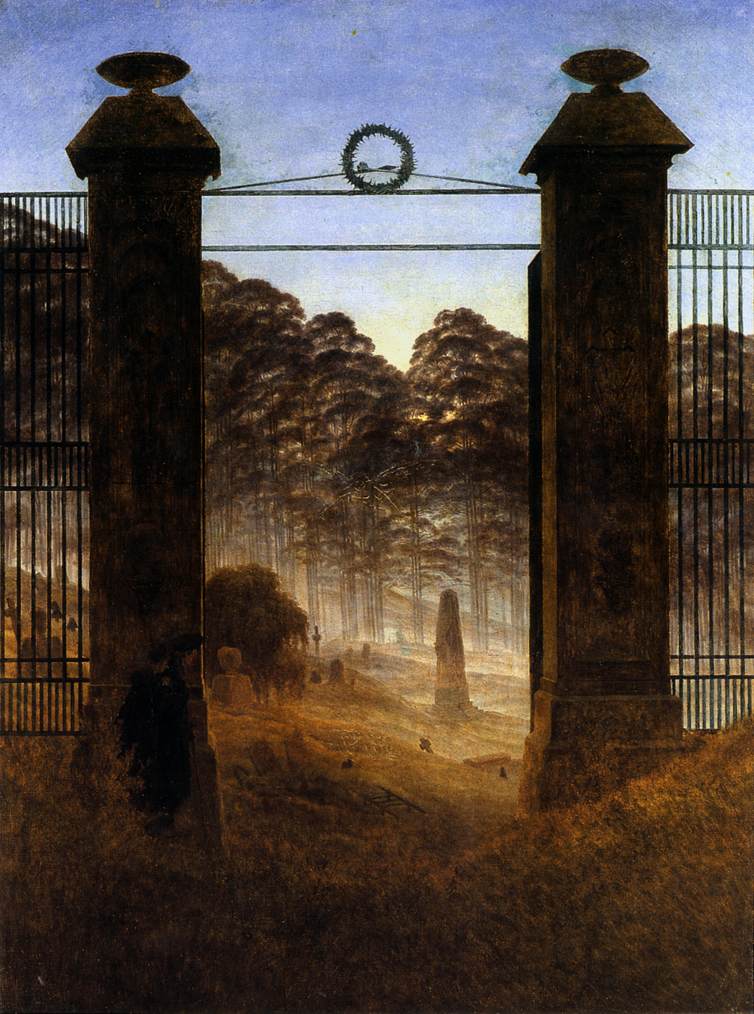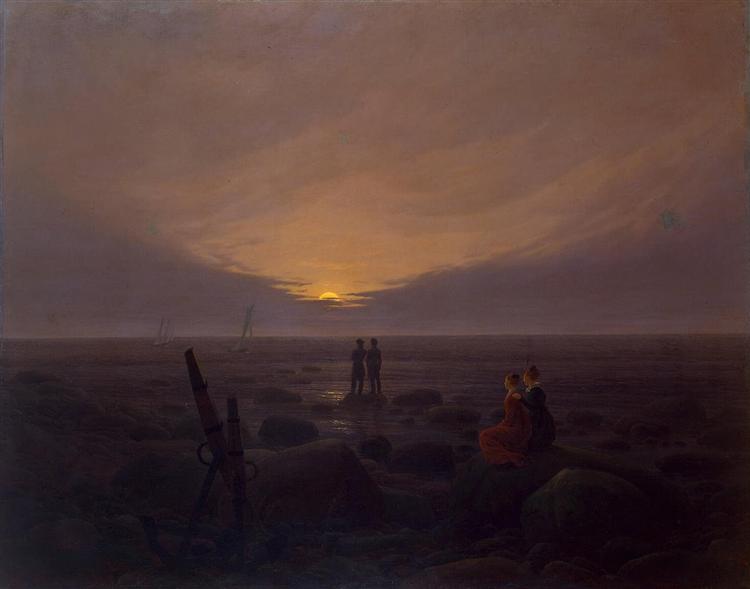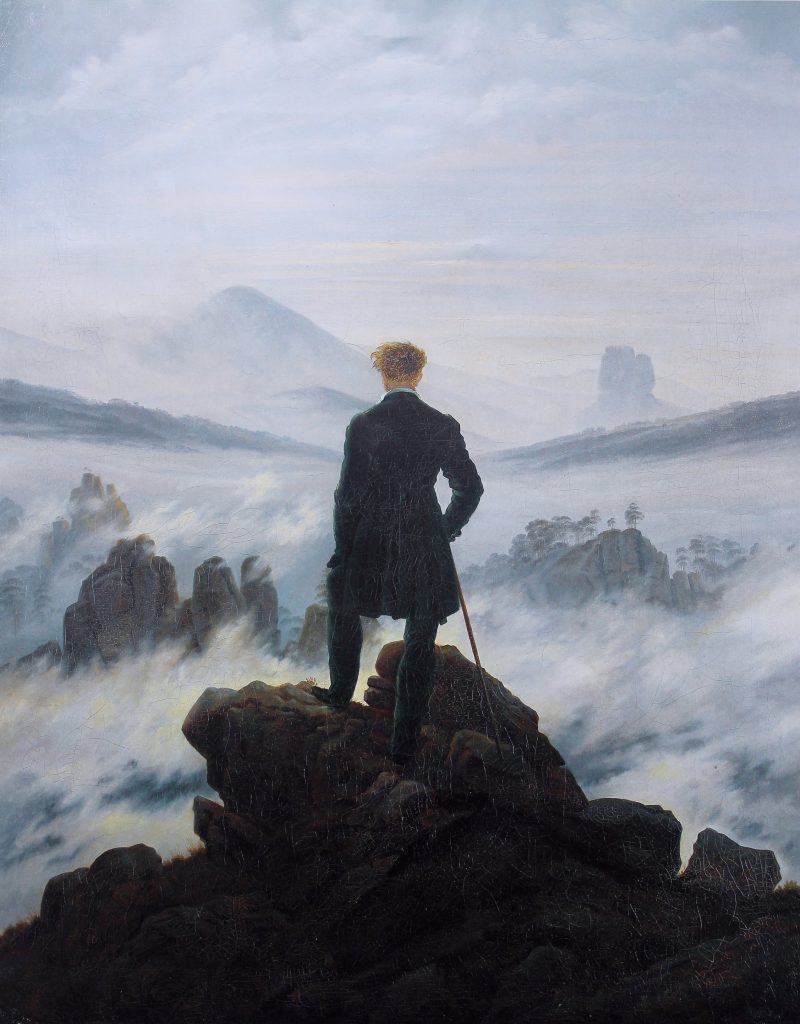
Caspar David Friedrich was a german romantic painter. He first studied at the University of Greifswald in Germany, where the art department is now named the Caspar David Friedrich Institut, in his honour. He went on to study at the Academy of Copenhagen, before settling in Dresden for the remainder of his lifetime.
Friedrich was elected a member of the Berlin Academy after two pieces of his were purchased by the Prussian Crown Prince, helping him more known. His altarpiece “Cross In the Mountains” also helped his name spread, but not for the best reasons. It was the first landscape in Christian art and was heavily critiqued because of that. In 1805, Friedrich won a prize, helping establish his reputation.


He was decently popular in his early career, but his reputation, unfortunately, declined over the last 15 years of his life, leaving him to die in obscurity. Romanticism went out of style, and Friedrich’s work was too original and personal to be understood by the public. Living in poverty and relative isolation near the end of his life, symbols of death began to appear in his paintings. Around this time, he was described by friends as “the most solitary of the solitary.”
He came back into the light at the beginning of the 20th century, over half a century after his death, when 32 of his pieces were featured in an exhibition in Berlin. This modern revival died out and he lost popularity once again post-war after the nazi party used his work to promote their ideologies. Friedrich later came back into acknowledgement around the 1970s.

Landscapes were Caspar David Friedrich’s specialty. Contemplative, emotional silhouettes, night skies, morning mists, barren trees and gothic ruins were all commonly found in his paintings. The gloominess can easily be attributed to Friedrich’s state of mind. Being familiar with death from an early age, losing his mother at the age of 7 as well as two sisters soon after. This most impactful loss in life though was surely his brothers, whom he witnessed fall through the ice of a frozen lake and drown. He was once described to be “surrounded by a thick, gloomy cloud of spiritual uncertainty.”

I personally really like Friedrich. His pieces evoke a lot of emotion, which I really appreciate, but I also really like and relate to him as a person. One of the reasons he fell out of popularity in his lifetime is said to have been because he was “too eccentric, melancholic and out of touch with the times,” which describes how I often feel myself.
Sources
https://en.wikipedia.org/wiki/Caspar_David_Friedrich
https://www.sothebys.com/en/articles/21-facts-about-caspar-david-friedrich